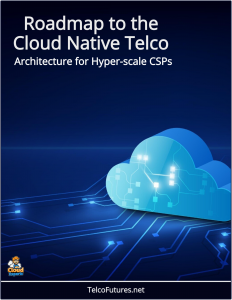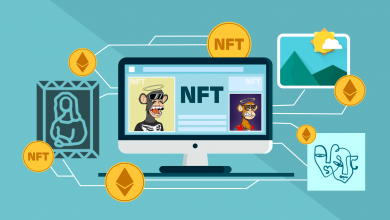Nephio and GenAI: Revolutionizing Cloud Native Network Automation
Exploring how Nephio and GenAI are converging to revolutionize cloud-native network automation, delving into their technical underpinnings, real-world applications, and future potential.
 The telecommunications industry stands at a pivotal moment.
The telecommunications industry stands at a pivotal moment.
The insatiable demand for connectivity, bandwidth, and agility—driven by 5G, edge computing, and the Internet of Things (IoT)—has exposed the limitations of traditional network architectures.
Enter Nephio, an open-source initiative under the Linux Foundation, which is redefining cloud-native network automation. When paired with the transformative power of Generative Artificial Intelligence (GenAI), Nephio promises to usher in a new era of intelligent, autonomous, and highly efficient networks.
The Rise of Nephio: Cloud-Native Automation at Scale
Launched in April 2022 by Google Cloud, the Linux Foundation, and a consortium of telecom leaders, Nephio is designed to simplify the deployment and management of Cloud Native Network Functions (CNFs) across distributed, multi-vendor environments. Built on Kubernetes, Nephio leverages intent-driven automation—a paradigm where operators define high-level goals (e.g., “deploy a 5G core with 99.99% uptime”) and the system autonomously configures the underlying infrastructure and network functions to meet those objectives.
Nephio’s core innovation lies in its use of Kubernetes Resource Model (KRM) and Configuration-as-Data (CaD) principles. These allow for declarative, machine-readable configurations that span three critical layers:
- Cloud Infrastructure: Managing compute, storage, and networking resources across public, private, and hybrid clouds.
- Workload Resources: Provisioning CNFs, such as 5G core components or radio access network (RAN) functions, with precise resource requirements (e.g., SR-IOV for high-speed networking).
- Workload Configuration: Rendering and applying configurations to network functions, ensuring interoperability and resilience.
Since its inception, Nephio has evolved rapidly. Release 1 (R1) in August 2023 established a foundational framework for intent-based automation. Release 2 (R2), launched in February 2024, expanded support for RAN automation and multi-cloud deployments, integrating with projects like OpenAirInterface (OAI). Release 3 (R3), unveiled in July 2024, further refined O-RAN automation and enhanced usability, solidifying Nephio’s role as a telecom-grade solution. With over 70 participating organizations and a 40% yearly increase in contributors,
GenAI: The Intelligent Amplifier
Generative Artificial Intelligence, exemplified by models like those powering ChatGPT or xAI’s own innovations, is transforming industries by generating content, solving problems, and optimizing systems from natural language inputs. In the context of network automation, GenAI’s ability to process vast datasets, infer intent, and produce actionable outputs makes it a natural complement to Nephio’s declarative framework.
Key capabilities of GenAI relevant to network automation include:
- Natural Language Processing (NLP): Translating human-defined intents (e.g., “scale the network for a concert event”) into machine-executable configurations.
- Pattern Recognition: Analyzing historical network data to predict and preempt failures or bottlenecks.
- Artifact Generation: Automatically creating configuration files, documentation, or even Kubernetes Custom Resource Definitions (CRDs) tailored to specific use cases.
- Self-Optimization: Continuously refining network parameters based on real-time telemetry and performance metrics.
When integrated with Nephio, GenAI elevates automation from a reactive process to a proactive, intelligent system capable of anticipating needs and adapting dynamically.
The Synergy: How Nephio and GenAI Work Together
The marriage of Nephio and GenAI is poised to address several longstanding challenges in network automation: complexity, vendor lock-in, and operational inefficiency. Here’s how they converge technically and practically:
1. Intent Translation and Automation
Nephio’s intent-driven model thrives on clear, high-level directives. GenAI enhances this by interpreting ambiguous or complex human inputs and converting them into precise Kubernetes CRDs or Helm charts. For example, an operator might say, “Ensure low-latency video streaming for 10,000 users at the edge.” GenAI could analyze the request, map it to Nephio’s resource models, and generate configurations for a User Plane Function (UPF) and edge caching pods, all deployed via Nephio’s automation pipeline.
2. Automated Artifact Generation
Manually crafting configurations for multi-vendor CNFs is a time-consuming bottleneck. GenAI can accelerate this by generating standardized artifacts—such as YAML files, network policies, or even Python-based Kubernetes operators—based on Nephio’s schemas. In Nephio R2, the introduction of the Nephio SDK already streamlines onboarding; GenAI could take this further by auto-generating vendor-specific adaptations from legacy formats like YANG.
3. Conversational Operations
Imagine a network engineer interacting with a GenAI-powered interface: “Why is latency spiking in Region X?” The AI, integrated with Nephio’s telemetry (e.g., via Prometheus or a service mesh), could pinpoint a misconfigured RAN component, suggest a fix, and apply it through Nephio’s GitOps-driven reconciliation loop—all in seconds. This conversational AI capability aligns with Nephio’s roadmap, which hints at advanced intent handling as a future focus.
4. Self-Optimizing Networks
Nephio’s active reconciliation—where the system continuously aligns the network’s state with the desired intent—pairs perfectly with GenAI’s optimization prowess. By analyzing real-time data (e.g., traffic patterns, CPU usage), GenAI can propose scaling adjustments or rerouting strategies, which Nephio then executes. For instance, during a traffic surge, GenAI might recommend spinning up additional UPF instances, which Nephio deploys across a multi-cloud topology.
5. Legacy Integration
Many telecom operators still rely on legacy systems with proprietary configurations. GenAI can bridge this gap by converting these into Nephio-compatible formats, enabling a smoother transition to cloud-native architectures. This aligns with Nephio’s goal of reducing onboarding friction for network functions.
Real-World Impact: Use Cases
The Nephio-GenAI synergy is already showing promise in cutting-edge applications:
- 5G and O-RAN Deployments: Nephio R3’s focus on O-RAN automation, combined with GenAI’s ability to optimize RAN configurations, enables telecoms to deploy disaggregated, multi-vendor networks at scale. For example, GenAI could dynamically adjust Distributed Unit (DU) settings to minimize interference, with Nephio handling the deployment.
- Edge Computing: In latency-sensitive scenarios like autonomous vehicles, GenAI can predict traffic demands and instruct Nephio to pre-provision edge nodes, ensuring seamless connectivity.
Enterprise Private Networks: Companies adopting private 5G networks can use GenAI to design tailored solutions (e.g., “secure IoT for a factory floor”), with Nephio automating the rollout across hybrid clouds.
Technical Challenges and Solutions
While the potential is immense, integrating GenAI with Nephio isn’t without hurdles:
- Complexity: GenAI models require significant compute resources. Solution: Leverage Nephio’s multi-cloud support to offload AI workloads to high-performance clusters (e.g., Google Cloud’s GKE).
- Security: AI-driven automation could introduce vulnerabilities. Nephio’s Security Special Interest Group (SIG), launched with R2, is addressing this by embedding robust policies (e.g., mTLS) into the automation stack.
- Accuracy: GenAI outputs must be precise to avoid misconfigurations. Solution: Combine AI with Nephio’s reconciliation loops to validate and correct generated artifacts in real-time.
The Future: Autonomous Networks and Beyond
Looking ahead, Nephio and GenAI are set to drive the telecom industry toward fully autonomous networks—self-healing, self-scaling systems that require minimal human intervention. Nephio’s roadmap includes deeper integration with projects like Sylva and CAMARA, expanding its reach into enterprise use cases and transport networks. Meanwhile, GenAI’s evolution—potentially incorporating xAI’s advancements—could enable predictive maintenance, anomaly detection, and even network design from scratch.
By 2030, we might see a world where telecom operators simply state their business goals (“connect 1 million rural users”), and a Nephio-GenAI system designs, deploys, and optimizes the entire network autonomously. This vision aligns with the broader industry shift toward Network-as-a-Service (NaaS), where flexibility and intelligence are paramount.
Conclusion
Nephio and GenAI are not just incremental improvements—they’re a revolution in cloud-native network automation. Nephio provides the scalable, open foundation, while GenAI infuses it with intelligence and adaptability.
Together, they empower telecom operators to meet the demands of a hyper-connected world with unprecedented efficiency and agility. As the Nephio community grows and GenAI matures, their combined impact will redefine what’s possible in network management, paving the way for a smarter, more resilient digital future.



